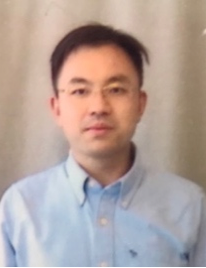matExplorer: Visual Exploration on Predicting Ionic Conductivity for Solid-state Electrolytes
Jiansu Pu1*, Hui Shao1, Boyang Gao1, Zhengguo Zhu1, Yanlin Zhu2, Zongkai Yan1, Yunbo Rao1, Yong Xiang1
1 University of Electronic Science and Technology of China, Chengdu, 610000, China
2 Clean Energy Research Institute, Shenzhen, 100083, China
EXTENDED ABSTRACT: Lithium ion batteries (LIBs) are widely used as important energy sources for mobile phones, electric vehicles, and drones. Experts have attempted to replace liquid electrolytes with solid electrolytes that have wider electrochemical window and higher stability due to the potential safety risks, such as electrolyte leakage, flammable solvents, poor thermal stability, and many side reactions caused by liquid electrolytes. However, finding suitable alternative materials using traditional approaches is very difficult due to the incredibly high cost in searching. Machine learning (ML)-based methods are currently introduced and used for material prediction. However, learning tools designed for domain experts to conduct intuitive performance comparison and analysis of ML models are rare. In this case, we built a visual analysis system based on visualization technology, trying to help experts in the field of materials analyze the results of machine learning, predict and look for high-performance solid electrolyte materials. Our system uses a multifaceted visualization scheme designed to support analysis from various perspectives, such as feature distribution, data similarity, model performance, and result presentation. We compare the results of several machine learning algorithms, and use visualization technology to display the results. We visually analyze the relationship between materials through different views, and finally give the prediction based on some cases we summarized. Case studies with actual lab experiments have been conducted by the experts, and the final results confirmed the effectiveness and helpfulness of our system. In the future, we will consider using graph neural network (GNN) method to further analyze the data in order to obtain more accurate prediction results.

JIANSU PU has completed his PhD from The Hong Kong University of Science and Technology. He is currently an Associate Professor with the School of Computer Science and Engineering, University of Electronic Science and Technology of China, Chengdu, China. And he is honored as the special expert of Sichuan Thousand Talents Program. His research interests include information visualization, visual analysis in spatiotemporal data, time series, and social networks.